June is a lot of things for different folks. For some, it’s Superman month! It was in the June 1938 debut issue of Action Comics that the Man of Tomorrow first appeared. Some Silver Age comic books even say Superman celebrates his birthday on June 10 (the day he landed on Earth), while Clark Kent celebrates his birthday on June 18 (the day the Kents legally adopted him and also the birthday of original Superman actor Bud Collyer).
With that in mind, how about a timeline of his amazing history? Not a complete timeline perhaps, but certainly a nerdy one that helps us consider the long and ever-evolving history of the Last Son of Krypton. Let’s begin!
The Golden Age of Comics!
1933 – Jerry Siegel and Joe Shuster publish the short story “Reign of the Super-Man” in Science Fiction magazine. In the story, the title character is a bald homeless man named Bill Dunn who gains telepathic powers from a bald scientist’s experiment. Dunn intends to take over Earth, but then his powers wear off and he returns to being a face in the crowd.
After this, Siegel considers that Superman (now spelled without the hyphen) could be better as a hero of an ongoing adventure series. He and Shuster put together a new comic strip version of Superman who has largely physical rather than mental enhancements. Siegel and Shuster say they take inspiration from Tarzan and John Carter of Mars. Some believe they are also inspired by the 1930 novel Gladiator by Philip Wylie, but this is never confirmed.
The story is that of an alien named Kal-L, son of Jor-L and Lora, the last survivor of the dead planet Krypton, a world inhabited by “supermen,” people just like humans but a million years more evolved in biology and technology, allowing them great strength, speed and agility. When the planet erupts, Kal-L is sent to Earth and raised by a kindly Mid-Western couple under the name Clark Kent. As an adult, he becomes the hero Superman, whose biology makes him a “man of tomorrow” and a “man of steel.” He can’t fly, though he can leap an eighth of a mile. He isn’t invulnerable, but nothing short of tank fire can hurt him. He has no heightened senses. He does not wear a costume.
According to Shuster and Siegel, the name “Clark Kent” comes from the actors Clark Gable and Kent Taylor. The claim the name is taken from combining the first names of the pulp magazine heroes Kent Allard AKA the Shadow and Clark “Doc” Savage is false. Surviving documents from 1934 show that Siegel and Shuster were definitely already using the name Clark Kent by then, whereas the Shadow’s real name Kent Allard wasn’t revealed until 1937.
Shuster and Siegel submit the story of Clark Kent/Superman to several newspaper publishers. It is rejected each time, sometimes due to the art quality, sometimes due to the premise of Superman’s powers being “unrealistic.”
1934 – Shuster loses confidence that Superman will be published and steps away from the project. The original artwork and pages are thrown away, except for one page displaying a plain clothes Superman leaping into action.
Jerry Siegel teams with artist Russell Keaton and they revise and redraw the comic strip. In this version, Clark Kent is born in the future and is the son of the last man alive on Earth, a scientist who sends the boy back in time where he is adopted by “Sam and Molly Kent.” This version is also rejected and Keaton decides “not to gamble on such a young and inexperienced writer” as Siegel and they part ways. Keaton goes on to create the comic strip Flyin’ Jenny and Siegel teams up again with Shuster.
1935 – Although their Superman story keeps getting rejected, Siegel and Shuster debut the comic book mystic detective Dr. Occult in New Fun Comics #6.
1936 – Lee Falk’s masked hero the Phantom debuts in newspaper strips. Unlike previous masked vigilantes in comic strips and radio shows, the Phantom wears a skintight outfit. Shuster redesigns Superman so that he now wears a skin-tight costume loosely resembling a circus strongman outfit.
That same year, Siegel and Shuster create a team of super-scientist comic book heroes called the Federal Men. In New Fun Comics #16, Siegel and Shuster have Dr. Occult don a red cape and a magic belt that lets him fly, making him a precursor to Superman.
1937 – In New Comics #12, Siegel and Shuster’s story “The Federal Men of Tomorrow” introduce a heroic scientist from the year 3000 named Jor-L. This story turns out to be a dream.
This same year, pulp magazine readers learn that Doc Savage AKA the Man of Bronze has a lab hidden in the Arctic Circle which he calls the Fortress of Solitude. Years later, Superman will use the same name for his own Arctic retreat.
1938 – After being rejected by 17 different publishers, Superman finds a home in Action Comics #1 because the anthology comic needs extra content to fill out its pages. Siegel and Shuster rework and cut the newspaper strips so that they will fit into comic book page format. To put as much story as possible into Action Comics #1, his origin is summarized in just over half a page. Since many rejections regarded Superman’s abilities as impossible, the very first page of Action Comics explains the hero’s powers as being no stranger than the proportional abilities of insects.
Lois Lane, also makes her debut in Action Comics #1, predating the official debuts of Lex Luthor, the Daily Planet, the people of Krypton, Perry White, Jimmy Olsen, Smallville and the Kent family. Lois is inspired by real life journalist Nelly Blye and fictional hero Torchy Blane, while her appearance is based on model Joanne Carter (who later marries Jerry Siegel).
At this time, Lois and Clark are said to work for the Cleveland News, which is quickly renamed the Daily Star, inspired by the Toronto Star where Shuster once worked as a newsboy. The city Superman operates in is indicated to be Cleveland but is later identified as a fictional place called Metropolis (the name inspired by the title of the Fritz Lang film).
1939 – Superman gets his own self-titled anthology magazine and starts appearing in newspaper strips across America. The newspaper strips and Superman #1 expand on Superman’s origin, introducing Jor-L and his wife Lora (later spelled “Lara”), as well as the Kents, and revealing that the hero’s power is partly due to Earth having less mass and gravity than Krypton. By this time, he’s started to display enhanced senses and will develop even more abilities over the years. His strength, resistance to injury, and speed will also increase.
Since there is a real newspaper called the Daily Star, the Superman comic strips and comic books change the name of Clark’s workplace to the Daily Planet.
A year after his debut, Superman faces his first major villain in Action Comics #13, a bald mad scientist who calls himself Ultra or Ultra-Humanite (because he’s just that much better than the average human, the arrogant jerk).
1940 – On February 12, Bud Collyer (age 32) becomes the first actor to play Superman, starring in the radio series The Adventures of Superman. Collyer’s identity as the voice of Superman is kept secret from the general public until 1946.
In the same program, Rolly Bester (age 23) becomes the first actor to play Lois Lane. She leaves after three episodes, succeeded by Helen Choate. Two months later, Choate leaves and the role goes to Joan Alexander (age 25). Alexander will play the role for the rest of the radio series and also do so in various cartoons.
A trained singer, Collyer gives Clark Kent and Superman two different voices. The comics follow this idea, saying that the same muscle control that allow Superman to shake a person’s hand without crushing it also lets him give Clark Kent and Superman totally different voices. In a couple of comics, this is taken further and it’s said that Superman can actually alter his facial features too.
The radio show indicates that Superman’s uniform and his symbol are of Kryptonian origin rather than things he designed himself. The radio show also introduces the idea that Superman can fly through the air and even hover. According to the radio series, baby Kal ages during his journey from Krypton and arrives on Earth as an adult, apparently having been educated by technology built into his starship.
In Action Comics #23, Superman fights a red-haired scientist who is only referred to as Luthor (or “Luthor, the mad scientist”). Luthor quickly becomes a recurring villain and overshadows the Ultra-Humanite.
On July 3rd, for a special “Superman Day” celebration at the New York’s World Fair, Ray Middleton (age 33) becomes the first actor paid to play Superman in public.
Siegel and Shuster propose a story called “K-Metal from Krypton” wherein a metal ore from Superman’s planet causes weakness and illness in him. The story would conclude with Lois Lane learning Superman’s double identity. She agrees to help him keep it secret, becoming a full partner in his adventures from now on. DC Comics rejects the story as it would change the status quo too much.
1941 – The Superman cartoon serials, developed by Fleischer Studios, debut in movie theaters. Lois and Clark are voiced by Joan Alexander and Bud Collyer respectively. Like the radio show, the cartoon Superman has the ability to fly.
Fill-in artist Leo Nowak, who worked on the Superman daily comic strips, gets confused who Luthor is (mistaking him either for Ultra or for a bald henchman seen in one Luthor story). In Superman #10, Nowak depicts the villain as heavier, with a fuller face, and bald rather than with a full head of hair. From that point forward, Luthor is bald.
Superman #10 features our hero actually defying gravity for the first time in the comics. Superman #11 then confirms that he can now fly.
1942 – Superman constructs the Secret Citadel, a hidden base located in the mountains outside of Metropolis.
1943 – The Superman radio show takes the idea of “K-metal” and uses it for a story called “The Meteor from Krypton.” The adventure introduces kryptonite (a word that combines “meteorite” and “Krypton”), a strange glowing ore that causes illness in the hero. The same story revises Superman’s radio origin so that it now matches the comic book version.
1944 – Luthor the mad scientist becomes the first comic book character ever to use a weapon specifically identified as an atomic bomb. The US Department of War (now known as the Department of Defense) has the story’s publication delayed by two years.
1945 – A newspaper comic strip story where Luthor attacks Superman with radiation is pulled from publication by the War Department.
Jerry Siegel introduces an adolescent version of Superman, named Superboy, in More Fun Comics #101. Superboy and his adventures in a town called Smallville are considered to exist outside of the official Superman canon.
In the Superman radio show, the hero has his very first team-up story with Batman and Robin. The dynamic duo become recurring characters, taking over focus whenever Superman is out of town because Collyer needs a break.
1946 – The Adventures of Superman do a promotional campaign where Superman speaks in support of religious and racial tolerance. Bud Collyer is interviewed about this and it is at last revealed to the general public that he is the voice of Superman.
1948 – The live-action Superman movie serials begin, starring Kirk Alyn (age 38) in the title role and Noel Neill (age 28) as Lois Lane.
1949 – Kryptonite makes its first comic book appearance in comics in Superman #61 (originally, it was only used in the radio plays), 11 years after the hero’s debut. Kryptonite is colored red in this issue, but in all subsequent stories it is green (though other forms of Kryptonite will appear starting in 1958). In this same story, the comic book Superman finally learns the name and history of his home planet Krypton. He’d been ignorant of his origins until this point. Interestingly, in this comic, Superman does not name the rock that acts as poison to him and instead refers to natives of Krypton as “Kryptonites.” In the poisonous rock’s second appearance, it is called kryptonite and natives of Krypton are referred to as Kryptonians.
1950 – Lana Lang is introduced as Clark Kent’s childhood love interest and one of his best friends. Like Lois, she winds up temporarily becoming a superhero herself on occasion.
Noel Neill and Kirk Alyn reprise their roles as Lois and Clark in the movie serial Superman VS. The Atom Man.
1951 – Action Comics #158 retcons Superman’s history, now saying that the Superboy stories are canon and that he did live in Smallville as a child.
Actor George Reeves (age 37) stars alongside Noel Neill in the film Superman and the Mole Men. This 58-minute film serves as a test pilot for an ongoing Superman TV show in the following year.
After 11 years on the air, the radio show The Adventures of Superman comes to an end.
1952 – Although they’ve shared hundreds of Worlds Finest Comics covers together, it is not until this year that Superman and Batman have their first comic book team-up. The story appears in Superman #76 and also has the two heroes learn each other’s secret identities. They quickly become respected allies, though occasionally disagreeing on methods.
The TV show The Adventures of Superman debuts, starring George Reeves and Noel Neill. It lasts for six years.
1953 – Wonder Woman #59 establishes that the DC Universe is part of a larger multiverse. This idea becomes a major factor in certain Superman stories and major DC crossovers over the years.
In the story “Superman’s Big Brother,” the Man of Steel meets an amnesiac alien named Hal Kar and concludes that this may be an older sibling he never knew about. Hal Kar later regains his memory and leaves Earth. This story will be revised years later to introduce the character Mon-El.
1954 – Action Comics #199 presents “The Phantom Superman.” Luthor uses his “3-D Materializer” that can bring any image to life through the use of “duplicate atoms” which can replicate anything but color. A gray “phantom Superman” is created, with all of the hero’s abilities. This character is not seen again, but the idea will be revised and used to create Bizarro.
1955 – We learn that Jor-El sent Kal’s childhood dog Krypto into space in a test starship. The ship lands outside of Smallville when Clark Kent is a teen and Krypto becomes a super-dog in Earth’s environment.
1956 – The Silver Age Begins! Following the introduction of Barry Allen as the new Flash, the DC Universe rebuilds with many new characters sporting familiar names, while most previously published comics are now regarded as being out of continuity.
1957 – Superman #113 establishes that the hero’s Kryptonian name is Kal-El (rather than the earlier Kal-L spelling).
Superboy #59 reveals that Clark (then Superboy) and Luthor actually first met in Smallville. In the story, Luthor is a bald man a couple of decades older than teen Clark Kent. He operates in Smallville as the technological hero Amazing Man, then begins helping people in the nearby town of Hadley. Superboy discovers that Luthor is actually pretending to be a hero while really committing criminal acts and brings him to justice. Luthor swears that he will have revenge on Superboy, his first enemy, the first person who has defeated him.
1958 – The Silver Age Superman truly begins! It is decided that Superman will now be rebooted for the most part, like much of the DC Universe already. It is also decided that there will be stronger science fiction elements in his story. The Fortress of Solitude is introduced as Superman’s hidden retreat in the Arctic Circle, while a secondary fortress is located at the bottom of the Sargasso Sea. The mutagenic red kryptonite becomes the first of many new forms of the radioactive ore to plague Superman. This year introduces the villain Brainiac (from whom we get the slang word “brainiac”) and Bizarro, an imperfect duplicate of the hero. During his first fight with Brainiac, Superman discovers that the villain has imprisoned thousands of Kryptonian survivors in the miniaturized Bottle City of Kandor.
We learn that teenage Clark Kent met the 30th century teens known as the Legion of Super-Heroes and regularly joined them on adventures in both the present and the future. This gives him childhood friends he can be completely honest with, and informs his optimism and faith in humanity.
As the new Silver Age version of Superman’s history goes on, Jor-El is said to be descended from a long line of scientists and pioneers. The Silver Age Lara Lor-Van is revealed to be an astronaut and robotics engineer. The two have many adventures before getting married, with Lara often being the more proactive of the two.
1960 – For the first time, it is said that Superman’s powers come not only from his biology and Earth’s lesser mass/gravity, but also because Kryptonian cells absorb and process the “ultra solar rays” of a yellow sun like Earth’s. Superman’s costume is now said to be made from Kryptonian fabrics, the organic fibers of which also absorb and process solar radiation, making the costume indestructible armor.
Jerry Siegel writes a story establishing that Superman met his greatest enemy Luthor when they were both teens in Smallville. Luthor, now given the first name Lex (revealed later to be short for Alexander), is depicted as a brown haired young man who admires Superboy and is a few years older than him. After creating a cure for kryptonite and a artificial life form of synthetic protoplasm, Luthor accidentally starts a fire in his own lab. Superboy saves his life but accidentally knocks over chemicals that destroy Luthor’s experiment and notes, and gasses released cause the scientist’s hair to fall out. Luthor decides that Superboy sabotaged his experiment out of jealousy. After more experiments and technological inventions fail, Luthor decides that the Last Son of Krypton is secretly ruining his life and declares that they are enemies forever.
1961 – The Phantom Zone villains, such as General Dru-Zod, and Clark Kent’s childhood friend Pete Ross are introduced.
The 1950s character Hal Kar is revised to be a teenage astronaut named Lar Gand, from the planet Daxam (whose people are similar to Kryptonians and also gain powers under a sun like Earth’s). Amnesiac, he finds Clark, who concludes that that this might be an older brother he never knew about. Lar Gand takes the name Mon-El but regains his memory later and explains his true origins. Superboy exposes Mon-El to lead, not knowing that the substance is lethal to Daxamites. Unable to cure him, Superboy sends Mon-El into the Phantom Zone and mourns the loss of a brother. Mon-El survives into the 30th century and is cured by the Legion of Super-Heroes, who accept him as a member.
This same year, Barry Allen crosses the multiversal barrier and discovers the world inhabited by DC’s Golden Age heroes, which he dubs “Earth-2.” It is later established that the Golden Age Superman stories largely took place in this parallel universe.
1962 – “The Feud Between Superman and Clark Kent!” Red kryptonite splits our hero into a good Clark Kent and an evil Superman. This story will later inspire events in the movie Superman III and an out-of-continuity comic book sequel the next year, called …
1963 – … “The Amazing Story of Superman-Red and Superman-Blue!” In this “imaginary story,” Superman’s attempts to increase his intelligence result in him splitting into two genius versions of himself, one dressed in all red and one dressed in all blue. They basically fix the world and then one of them marries Lois while the other marries Lana. This story is memorable enough to inspire a storyline in 1998.
1964 – “Crisis on Earth-Three” introduces the Crime Syndicate, an evil Justice League living in a twisted mirror of the DC Universe. Earth-Three’s evil Clark Kent is named Ultraman.
Due to legal concerns from the makers of “computer kit” toys called Geniac and Brainiac, Superman #167 retcons the nature of the villain Brainiac (previously considered an alien). It is now revealed to be a living computer mind who can download into different robotic bodies, making him “the villain who wouldn’t die.” The Brainiac computer kit is even advertised in the issue. We also learn that Brainiac’s creators give him a “son” who acts as his assistant: Vril Dox, ancestor of the future era hero Brainiac 5.
1966 – From the people who brought you Bye Bye Birdie comes the Broadway stage musical It’s a Bird… It’s a Plane… It’s Superman! starring Bob Holiday as Clark Kent and Patricia Marand as Lois Lane. It closes after 129 performances, though there are two revivals in the next year. You can find the soundtrack on CD.
1968 – Superman temporarily loses his abilities and becomes the masked vigilante called Nova.
In Superman #205, the Man of Tomorrow discovers that Krypton’s destruction was actually caused by an alien terrorist named Black Zero.
1969 – The Silver Age Superman Kal-El meets the Golden Age Superman Kal-L of Earth-2 for the first time in Justice League of America #73.
That’s the end of Part 1, folks! Check back tomorrow for Part 2!
Alan Sizzler Kistler (@SizzlerKistler) is the author of the New York Times Best Seller Doctor Who: A History. He is an actor, host, comic book historian and geek consultant who has recently relocated from NYC to LA. Archives of his work can be found at: AlanKistler.com
—Please make note of The Mary Sue’s general comment policy.—
Do you follow The Mary Sue on Twitter, Facebook, Tumblr, Pinterest, & Google +?



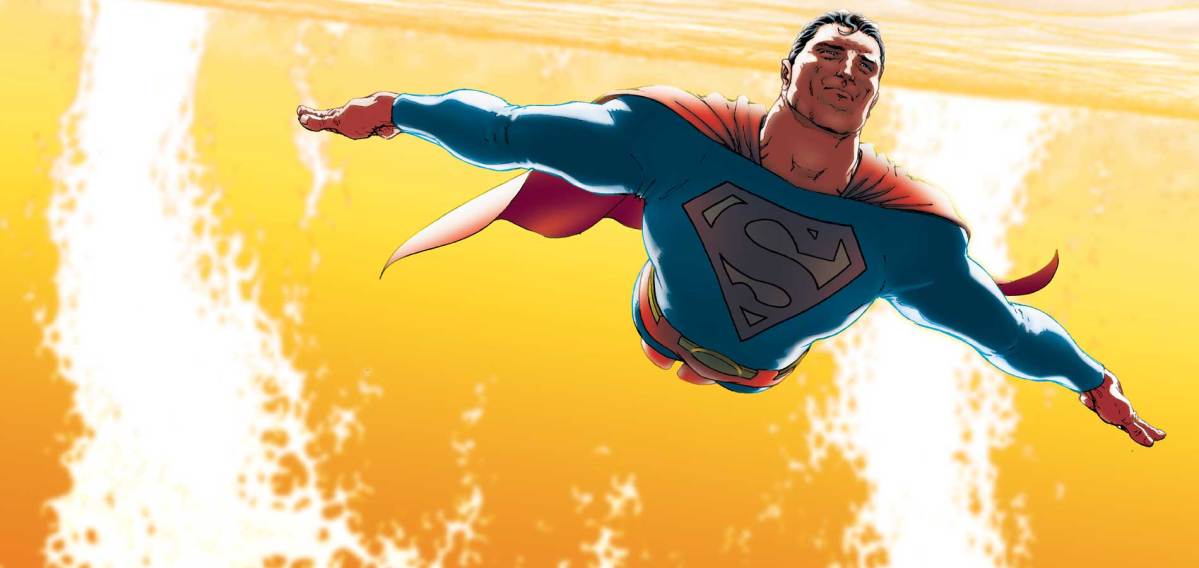
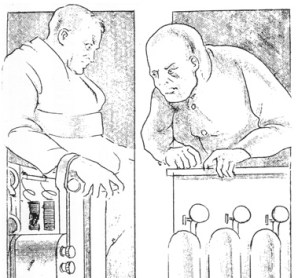
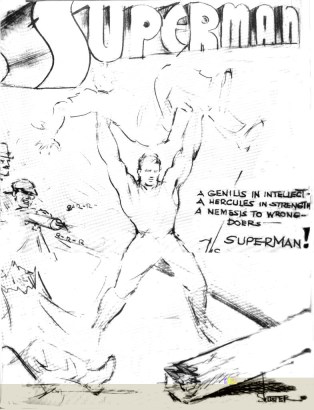
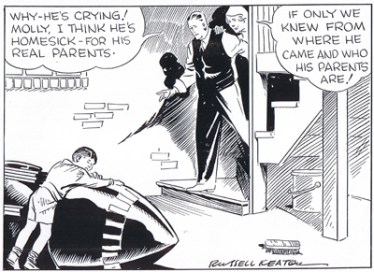
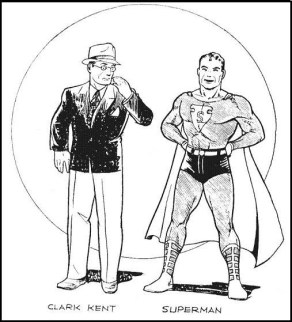
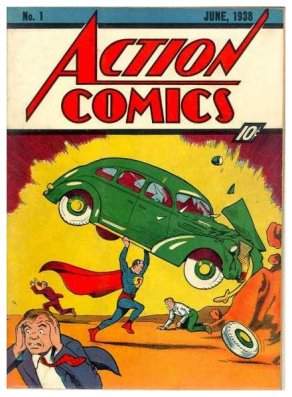
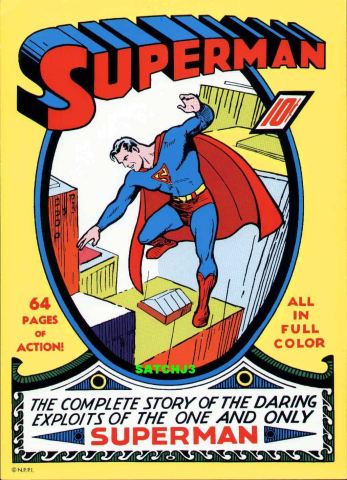
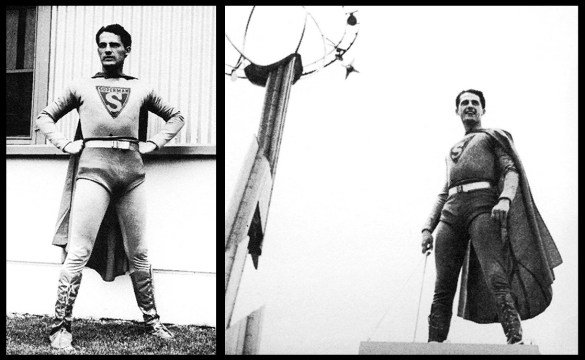
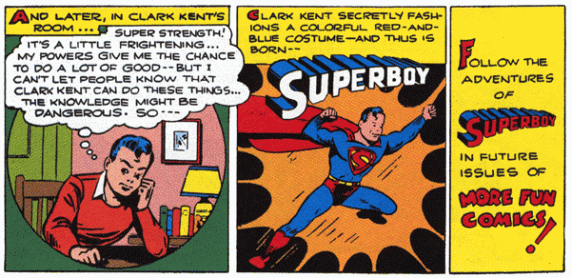
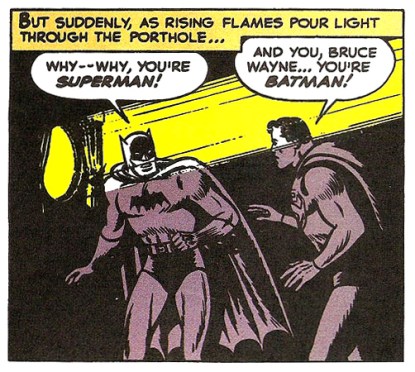
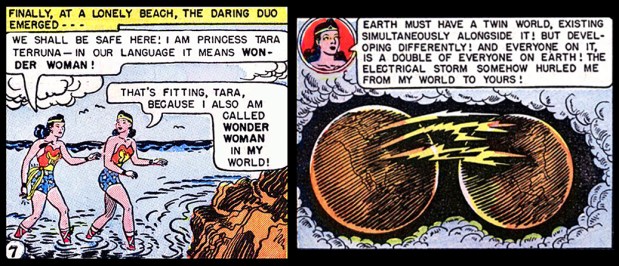

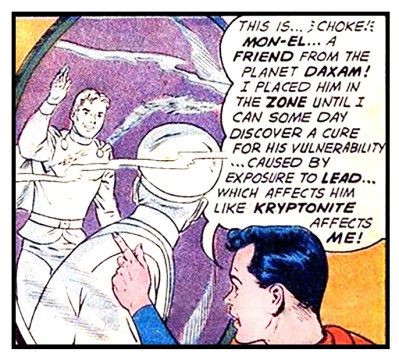
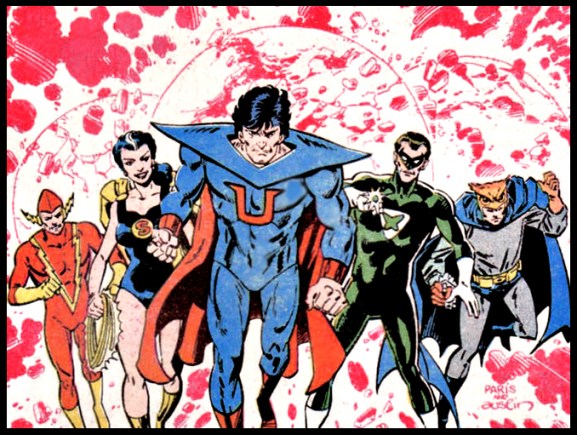
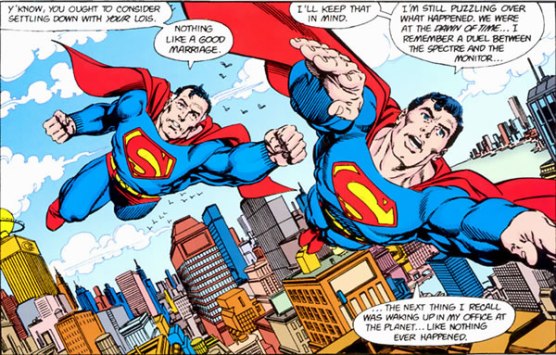





Published: Jun 17, 2015 06:00 pm